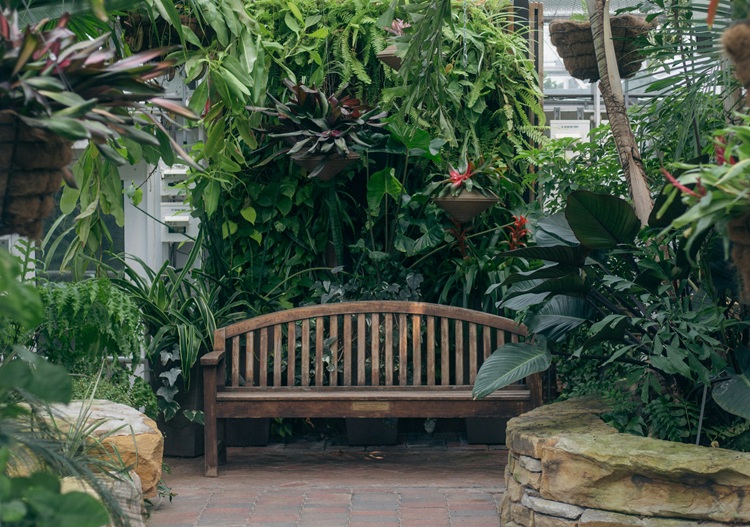
Conservatories can go beyond just sunlight-filled living areas by transforming into lush sanctuaries filled with plants and vibrant life. Many homeowners have started converting their spaces into indoor sanctuaries by incorporating plants. What steps can you take to maintain functionality while supporting the growth needs of greenery in your conservatory? By following this guide you will learn the best methods to incorporate plants into your sunroom without compromising its use as a functional living space.
Why Add Plants to Your Conservatory?
Plants enhance the aesthetics of your conservatory but they also provide tangible benefits:
- Improved Air Quality: Natural air purification occurs when plants take away toxins and enhance oxygen levels throughout your environment.
- A Relaxing Atmosphere: The presence of abundant greenery transforms your conservatory into a sanctuary where you can relax and relieve stress following a hectic day.
- All-Season Gardening: The sheltered space of a conservatory enables you to garden throughout every season by keeping your plants safe from external weather conditions.
It is a give-and-take, though. Keeping plants healthy in a conservatory requires careful thought about temperature, light, humidity, and space management.
Temperatures and Humidity Levels for Conservatory Plants
Finding the Right Temperature
Temperature regulation is crucial for maintaining a space conducive to both plants and people. Here are some tips:
- Warm-Loving Plants: If your conservatory receives plenty of sunlight and maintains warmer temperatures, tropical plants like orchids, palms, and hibiscus thrive well.
- Cool Tolerance: For unheated conservatories, opt for plants like succulents or herbs that can withstand lower temperatures during winter. Examples include rosemary or thyme.
- Installing Roof Panels: If temperature extremes are an issue, consider solid conservatory roof panels. These panels help insulate the space, keeping it cool in the summer and retaining warmth during winter.
Managing Humidity
While most greenery thrives in environments with moderate humidity, too much can lead to unwanted mold growth.
- Monitor humidity levels using a hygrometer; the ideal range is between 40-60%.
- Install a dehumidifier if your conservatory becomes excessively damp.
- Group plants together to create a naturally humid microenvironment for tropical varieties.
Best Plants for Conservatories
Depending on your preferences and the functionality of your space, here are some ideal plant options for different types of conservatories:
Low-Maintenance Favorites
- Succulents and Cacti: Easy to care for, they flourish in bright sunlit spaces with minimal watering needs.
- Rubber Plant: A sturdy, low-maintenance option with striking, glossy leaves.
Tropical Charm
- Orchids: These flowers flourish in warm, humid environments and add an exotic touch.
- Bougainvillea: A climbing plant that offers vibrant colors but requires plenty of sunlight.
Edible Options
- Herbs: Mint, basil, and parsley can thrive indoors, giving your conservatory both fragrance and functionality.
- Citrus Plants: Lemon and orange trees do well in warm conservatories with good sunlight.
Decorative Climbing Plants
- Mandevilla: Evergreen climbers that bring a tropical vibe with delicate blooms.
- Devil’s Ivy: Perfect for hanging baskets or growing over shelves to add a lush, cascading effect.
For large conservatories, plants like palm varieties or olive trees can make a bold statement and complement the space’s grandeur.
Arranging Plants in Your Conservatory
Strategic placement of plants can enhance both utility and visual appeal in your conservatory:
- Use Vertical Space: Install shelves or hanging baskets to maximize floor space.
- Group by Care Needs: Place plants with similar light and watering needs together to simplify maintenance.
- Create Focal Points: Cluster larger plants around a central point, like a cozy seating area.
Customizing Your Conservatory for Plants and Comfort
If you plan to use your conservatory both as a living space and for growing plants, balance is key. Here’s how to get it right:
Control Light and Shade
- Add Blinds or Curtains: On sunny days, protect plants from harsh light by using blinds or curtains to adjust light levels.
- Supplement with Grow Lights: During the winter months when sunlight is limited, install plant lights to ensure your greenery gets the necessary exposure.
Incorporate Functional Storage
Gardening tools and plant care essentials can make your conservatory messy if not managed properly. Consider adding:
- Ottomans with Storage Compartments for compact tool organization.
- Stylish Cabinets or Decorative Boxes to keep fertilizers and pots neatly tucked away.
Maintain Accessibility and Comfort
Maintaining a functional living area requires strategic planning for plant placement. Arrange your pots by creating groups rather than scattering them around randomly. Grouping plants into clusters prevents unnecessary clutter and enhances the visual organization of the space. Clustering plant arrangements produces a purposeful visual flow while preserving ample movement space.
Your setup becomes more adaptable when you utilize movable plant stands and containers. The ability to easily rearrange plants when necessary allows users to update their space’s appearance or adjust for guests and change sunlight exposure. Movable containers simplify plant maintenance by letting you move plants between different locations easily. Flexible containers combined with clustered plant arrangements maintain your living area’s functionality while creating a full green atmosphere.
Tips for Making It Through Winter
Winter can pose challenges for plant care in conservatories due to lower temperatures and reduced sunlight. Combat this by:
- Installing Insulation: Adding solid roof panels or insulating blinds can help maintain consistent temperatures.
- Growing Hardy Plants: Winter veggies like lettuce or kale are excellent, low-maintenance options for colder months.
- Protecting Tropical Plants: Bring heat-loving plants nearer to heat sources, or use portable heaters sparingly.
Get Creative with Your Sunroom
Make your conservatory a reflection of your personality. Whether it’s themed decor using teapots as quirky planters or inviting grapevines to trail across the ceiling, a creative touch can elevate the ambiance and create a fun, unique space.
Integrating plants into a conservatory is about achieving harmony between functionality and greenery. With careful temperature and light regulation, creative design, and the right selection of plants, your conservatory will flourish into a space that is both beautiful and practical.


Comment here